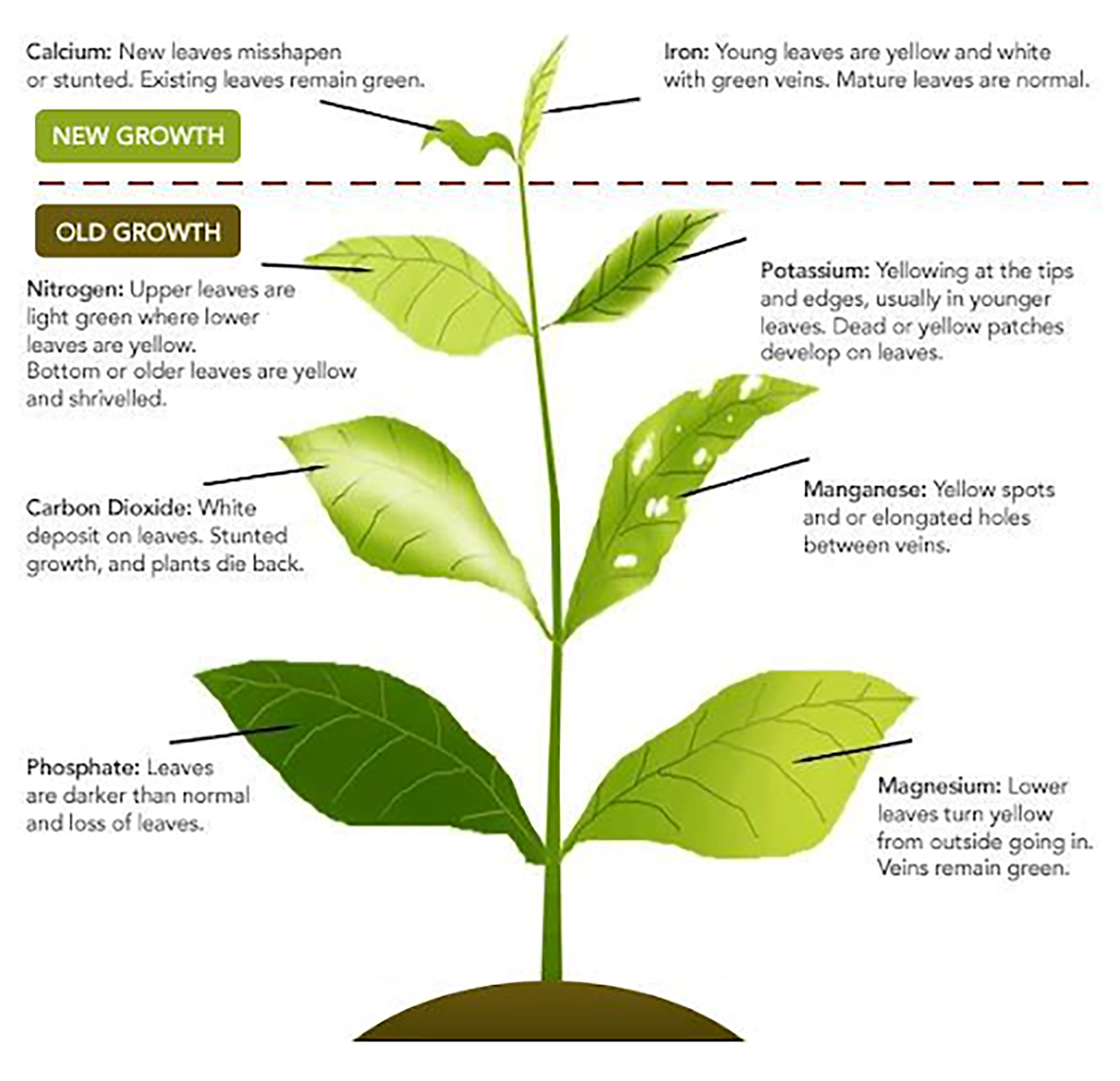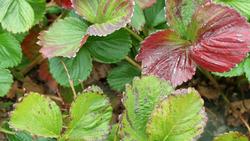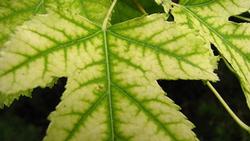Other Garden Problems
Nutrients: Too little or too much?
> Figuring out what's wrong
> Most common: nitrogen & iron deficiency
> How to address nutrient deficiencies
Plants need the right combination of nutrients to live, grow, and reproduce. Too little or too much of one or more nutrients can cause problems for plants. Deficiencies can result in things like reduced shoot growth and leaf size, leaf chlorosis (yellowing), necrosis (death of plant tissue), and die-back. Too much (excesses) of an element can be toxic and lead to weak, succulent growth, leaf burn, and also encourage insect pests and disease problems.
Figuring out what’s wrong

Try these steps to zero in on the cause of a nutrient-related plant problem:
OBSERVE: Look closely at the plant and note key things such as:
- What do the leaves look like?
- What color are they?
- Which leaves have symptoms - old leaves or new leaves?
- Are leaves yellow between the veins?
- Are there any brown areas on the leaves?
TEST: Do a simple soil test - check the pH and three main nutrients - nitrogen, phosphorus, and potassium.
COMPARE the symptoms you noted on the plant with this chart of nutrient deficiencies / excesses and match your symptoms to the nutrient most likely to be the cause.
Also, read more on nutrient and mineral excesses here.
Nitrogen and iron
The two most common nutrient deficiencies in ornamental plants are nitrogen and iron. They both result in yellowing of foliage, though in different locations on the plant and with different appearances on the leaves.

• Seen first on older leaves.
• Reduced growth.
• Leaves will be light green to yellow.
• Reds and purples may intensify with some plants.
• Reduced lateral breaks.
Too much nitrogen can produce lush growth that is attractive to various sucking insect pests, like aphids.

• Seen first seen in young leaves.
• Leaves will be light green with contrasting dark narrow green veins.
• Leaves may eventually show marginal scorching and bleaching.
• Symptoms will be more severe during cool wet spring weather.
Soil is usually not lacking in iron. It may not be available in a form that plants can use due to soil pH being above 7.0. Learn more about Changing pH in Soil.
How to address nutrient deficiencies
See this chart to see the sources of main soil nutrients - use these to address nutrient deficiencies in your soil.
